Female Druids, the Forgotten Priestesses of the Celts
From Ancient Origins awesome website (link at end of article below)
In medieval Irish legends they were called Banduri or Bandorai. Their existence was confirmed by ancient Greek and Roman writers. But who were the legendary female Druids?
The Druids were the ancient religious leaders, scientists and researchers of the Celtic society. For centuries, there was a common misconception that Druids were only male. However, numerous historical records attest to the fact that there were in fact women among their ranks.
The Wise Ones of Celtic society
The term ”Druid” comes from the Indo-European word ”deru”, which means ”the truth” or ”true”. This word has evolved into the Greek term ”drus”, meaning ”oak”.
The Druids were the intellectual elite. Being a Druid was a tribal function, but they were also poets, astronomers, magicians, and astrologers. It took them 19 years to gain the necessary knowledge and skills in alchemy, medicine, law, the sciences, and more. They organized intellectual life, judicial processes, had skills to heal people, and were involved in developing strategies for war. They were an oasis of wisdom and highly respected in their society
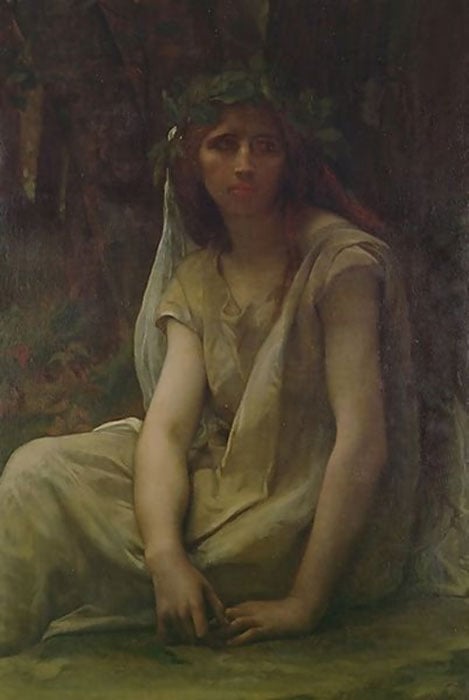
“The Druidess”, oil on canvas, by French painter Alexandre Cabanel (1823–1890) (Public Domain)
Roman Accounts of the Druidesses
Gaius Julius Caesar was fascinated with the Druids. He wrote that they were scientists, theologians, and philosophers, and acquired knowledge that was extraordinary. According to experts in Caesar’s writings, the great Roman leader was well aware of the female Druids. Unfortunately, most of the Roman writers ignored women in general, so it is not easy to find reference to them in historical texts. However, Strabo wrote about a group of religious women who lived on an island near the Loir River. In ‘Historia’, Augusta is a description of Diocletian, Alexander Severus and Aurelian, who discussed their problems with the female Druids.
- The Chartres Cathedral – A Sacred Site for Ancient Druids and Christians
- Druids and archaeologists battle over display of human remains at Stonehenge
- Mysterious Underground Labyrinth in Scotland May Have Originally Been a Druid Temple
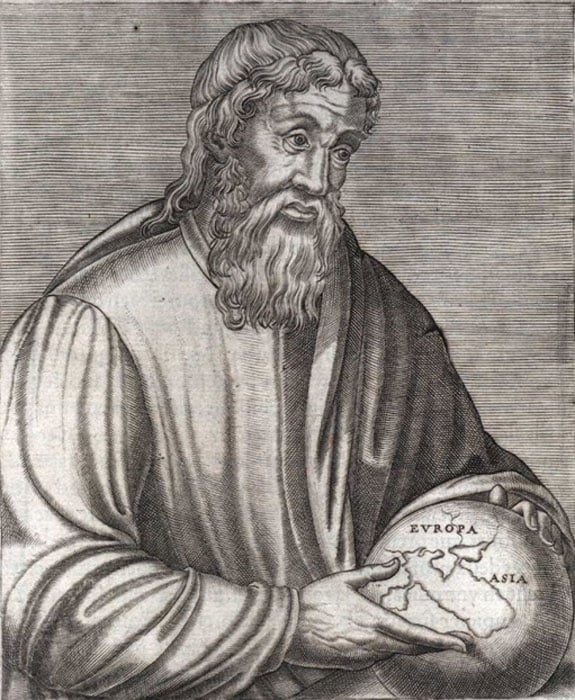
Strabo as depicted in a 16th-century engraving. (Public Domain)
Tacitus mentioned female Druids describing the slaughter of the Druids by Romans on the island of Mona in Wales. According to his description there were women known as Banduri (female Druids), who defended the island and cursed the black clad. Tacitus also observed that there was no distinction between the male and female rulers, and that the female Celts were very powerful.
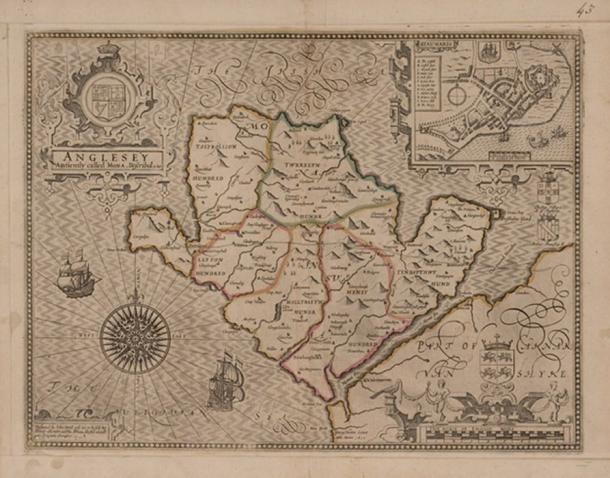
Map of the island of Mona, 1607. (Public Domain)
According to Plutarch, female Celts were nothing like Roman or Greek women. They were active in negotiating treaties and wars, and they participated in assemblies and mediated quarrels. According to the ‘Pomponius Mela’, virgin priestesses who could predict the future lived on the island of Sena, in Brittany.
Cassius Dio mentioned a Druidess named Ganna. She went on an official trip to Rome and was received by Domitian, the son of Vespasian. According to the description of the Battle of Moytura, two Druidesses enchanted the rocks and the trees, in order to support the Celtic army.
Famous Druidesses
According to the Irish traditions, there were two main names of the Druid women: baduri and the banfilid, meaning female poets. Most of the names of the female Druids stay forgotten. The name Fedelma was recorded in ancient texts, as a woman in the court of Queen Medb of Connacht, who was a “banfili”. She lived in the 10th century AD in Ireland.
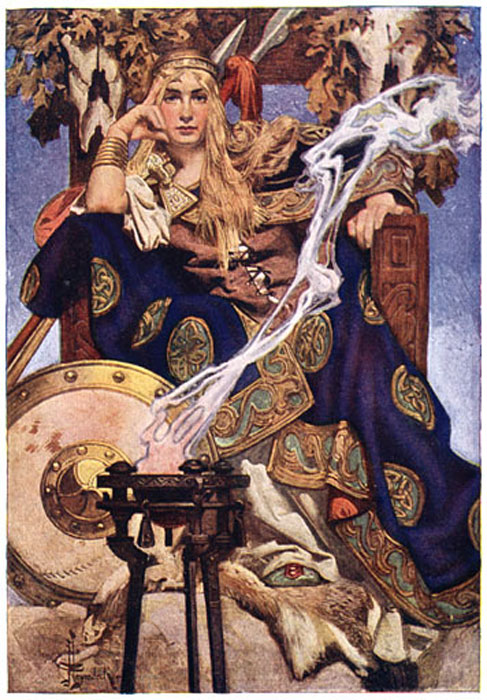
Queen Maev by J. C. Leyendecker. (Public Domain)
The most famous descendant of a Druid woman was Queen Boudicca, whose mother was a banduri. Boudicca was a queen of the British Celtic Iceni tribe. She led an uprising against the Romans in the 1st century AD. Researchers still argue whether Boudicca was a Druid too.
- Coligny Calendar: The 1,800-Year-Old Lunisolar calendar banned by the Romans
- How Ancient People Marked the Equinox Around the World
- Boudicca, the Celtic Queen that unleashed fury on the Romans
The Worship of Goddesses
The Druidesses worshipped goddesses, and celebrated with feasts in different months and seasons. One of the deities they worshipped, the goddess Brighid, was later adopted by Christian nuns as ‘Saint Brigid’.
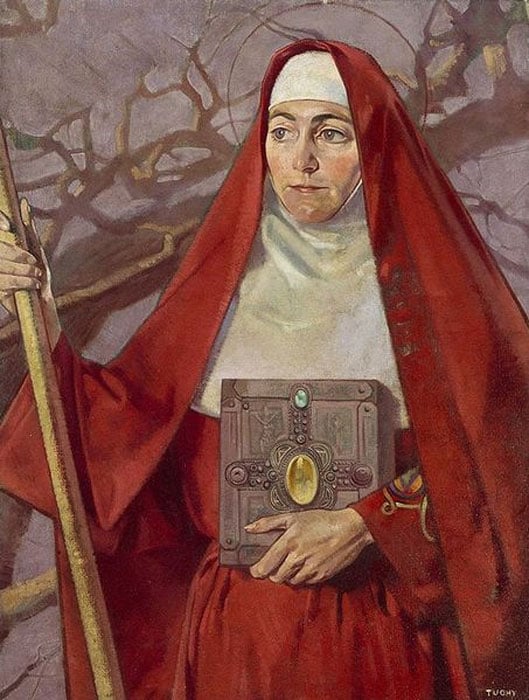
Saint Brigid. (Public Domain)
The Archeological Footsteps of the Druidesses
Archeologists have discovered several proofs for the existence of the female Druids. Many female burials have been discovered in Germany between the two rivers Rhine and Moselle. The women who were buried there were dated back to circa 4th century BC, and they were buried with lots of treasures, jewelry and other precious objects. Some of them were buried with a special torque on the chest, which are symbols of status. According to researchers, only a Druidess could have a high enough status to receive a burial like this. Two burials located in the Vix in Burgundy, France and Reinham in Germany were dated back to the 5th century BC, and almost certainly belonged to female Druids.
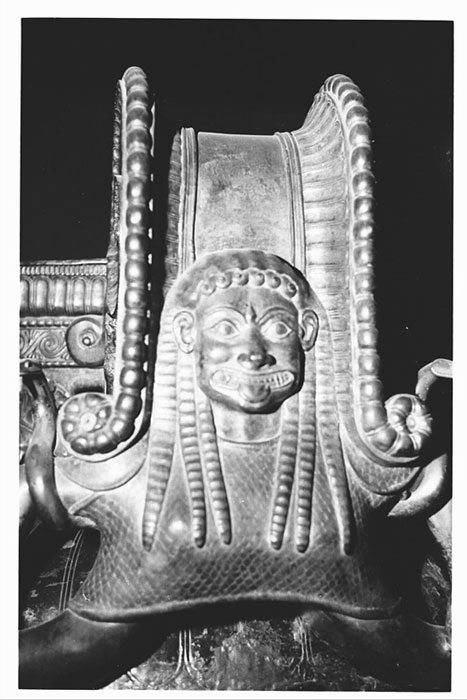
A Gorgon head is on the outside of each of the krater’s three handles found in Vix, Burgundy, France. (CC BY-SA 2.5)
Moreover, on the Rue de Récollets, in Metz, France, there was discovered an inscription dedicated to the female Druid in honor of the God Sylvanus. It is difficult to confirm which of the noble Celtic women were really Druids, but it is believed that most of the well educated women whose graves contained luxury goods were the elite of their tribes and quite possibly Druids.
The Heritage of Ancient Druidesses
The Romans killed many Druids and destroyed many of their books. The Roman Catholic church believed that female Druids were sorcerers and witches in cooperation with the devil. They also saw the knowledge of the Celts as a huge danger for their domination. The well-known Saint Patrick burned more than a hundred Druid books, and destroyed many places connected with the old cult.
However, Druidism has never fully disappeared. Nowadays, many people still try to follow the ancient tradition. Many researchers continue to work to rediscover the ancient wisdom of the Druids.
Featured image: Consulting the Oracle by John William Waterhouse, showing eight priestesses in a temple of prophecy. Source: Public Domain
References:
Miranda Aldhouse-Green, Exploring the World of the Druids. 1997.
Ward Rutherford, The Druids and their Heritage, 1978.
– See more at: http://www.ancient-origins.net/history/female-druids-forgotten-priestesses-celts-005910?nopaging=1#sthash.sF9VuioE.dpuf
